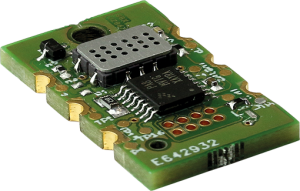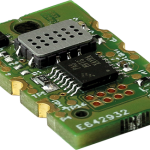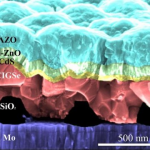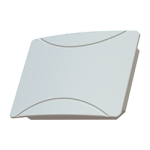News
MiCS-VZ-89F air quality sensor of Pewatron
Pewatron launches 4 new intelligent air quality sensing modules from SGX Sensortech. The MEMS based MiCS-VZ-86/89 air quality module makes the process of detecting VOCs simple by using innovative metal-oxide-semiconductor technology supported by a micro-electromechanical structure (MEMS). The sensing elements provide a swift response to changes in the levels of a wide range of VOCs and hence air quality. The technology has been produced in high volumes and to rigorous quality control by SGX for more than 10 years. The low power module incorporates an advanced signal processing algorithm to change the sensor signal into standard outputs. In addition, the proprietary algorithm automatically compensates small changes in sensor output over time and provides calibration free operation.
The modules come in 4 versions, which are combinations of output format and supply voltage format. Output format is I2C (MiCS-VZ-89) and PWM (MiCS-VZ-86), and for each of these the supply voltage can be chosen freely between 3.3 VDC (MiCS-VZ-89T/MiCS-VZ-86T) or 5 VDC (MiCS-VZ-89F/MiCS-VZ-86F).
Not only does the sensor produce an effective means of monitoring the level of VOCs in the air, it also provides an equivalency signal for the concentration of carbon dioxide present; CO2 is commonly used as a proxy for air quality.
The sensing module is ideal for the following applications;
- – Occupancy detection to reduce energy costs by the intelligent control of heating, ventilation and air conditioning systems
- – Vehicle cabin air quality
- – Bathroom and kitchen fan control
- – Air cleaners and purifiers
For further information of this or similar products, please check the next link: http://www.pewatron.com/en/news-press/news/news-details/archive/2015/06/22/air-quality-sensing-with-mems-based-mics-vz-86-or-mics-vz-89-module-from-sgx-sensortech/
91% efficiency MS-PE Series Inverter/Charger of Magnum
The MS-PE 230V Series Inverter/Charger from Magnum Energy is apure sine wave inverter designed specifically for the most demanding renewable energy applications. You can parallel up to four inverter/chargers for up to 17.2kw of power at 230V. The PFC charger is built into all of our inverter chargers. It uses less energy from a generator than a standard charger – using 25-30% less AC current than standard chargers. The inverter efficiency is around 91% and the continous power output is 4300VA.
For further information about this product you can click in the following link: http://www.magnum-dimensions.com/magnum-inverter-charger-230vac50hz
EffiBUILDING is getting a place in the market!
EffiBUILDING is updated every day with the latest technologies that show up in the market. Thanks to this, is getting more and more popular in the network, getting 300 unique visits per month from all over the world.
Last month EffiBUILDING had 10 new active users from different fields and they are already enjoying of the full access of our database. 
From manufacturers point of view that means that their products are viewed every day from this site and therefore, their sales are increasingly rising.
At the same time, researchers are cheking the newest prototypes of the market and making new contacts for the success of their future projects.
Don't wait more and be a member of EffiBUILDING! https://www.effibuilding.eu/membership/
GAP³ Integral Façade Technology system
GAP³ Integral Façade Technology” is a low energy refurbishment system which consists in the implementation of overlapping applications and measures, which affords a transformation of an existing building in a passive house standard low energy, modern and upgraded building. The GAP facade forms a unique building envelope which prevents any heat loss. A simple, high-quality and ecological interaction of light, wood and air eliminates any thermal bridges and significantly increases hygrothermal and acoustic comfort.
These technology has a unique building envelope which prevents any heat loss. A simple, high-quality and ecological interaction of light, wood and air eliminates any thermal bridges and significantly increases hygrothermal and acoustic comfort.
The GAP:skin reaches insulation values that cannot be achieved using conventional insulation materials. These conditions allow for entirely new approaches for simple house technology systems.
This Technology can be applied for new construction too. Their system have been applied since more than 15 years mostly in Austria, Germany and Switzerland.
For further information follow the next link: http://www.gap-solutions.at/en/solutions/gapskin/
Portable Indoor Air Quality Monitor of Aeroqual
Aeroqual is leading the move towards sensor-based air quality monitoring, a technology and market shift that promises to deliver better air quality for governments, industry, and citizens alike.
They have different products for Outdoor, Indoor and Ozone measurements.
EffiBUILDING has incorporated two different products for Indoor applications: Aeroqual Series 500 and Aeroqual Series 930.
The Series 500 Portable Indoor Air Quality Monitor enables accurate real-time surveying of common indoor air pollutants, all in an ultra portable handheld indoor air quality monitor. Data is stored on board the Series 500 with a maximum 8,188 records available. To download the data a USB cable is supplied for connection to PC. Other features on the Series 500 include monitor ID and location ID. Monitor ID identifies the monitor uniquely and ensures that all data from it are tied to that monitor.
The Series 930 Fixed Gas Monitor is a flexible monitor compatible with a range of gas sensors as well as a temperature and humidity sensor, if required. There is also the option to include an integrated display for reporting real-time gas concentrations and/or an optional strobe and siren kit which can be configured to activate to a user defined set point.
For further information about Aeroqual's products, check the following link: http://www.aeroqual.com/indoor-air-quality-monitors/indoor-products
InfinityPV foil – infinitely printed organic solar cell
InfinityPV ApS is a Danish start-up company founded in 2014 by Frederik C. Krebs (CEO) along with 31 co-owners. infinityPV has no external funding partners and is owned equally by every co-owner. This makes infinityPV a company unlike most.
The core of infinityPV is printed electronics and in particular printed organic solar cells. infinityPV is based on several patents within the field of organic solar cells and holds a wide range of competencies in this area. They address a broad range of products ranging from solar panels over materials to characterization hardware. Their general aim is to foster the development of printed organic electronics by introducing honest and innovative products to the market.
One of their products, the InfinityPV foil is infinitely printed organic solar cell (OPV) by the meter. They can produce the modules at any length tailored to any need. The solar foil is produced on thin plastic foil with a high degree of flexibility that allows unique applications and integration possibilities. The infinityPV foil can be cut to fit your application or used in a serial connection as delivered.
They have an efficiency between 2-4 % and can produce from 1-4 Watts per meter.
For more information about their products, check the following link: http://infinitypv.com/infinitypro
CCS801 Ultra-low power multi-gas sensor of Cambridge CMOS Sensors
Cambridge CMOS Sensors (CCS) micro-hotplate technology provides a unique silicon platform for the CCS80x range of Metal Oxide (MOX) gas sensors. These devices enable sensor miniaturisation, have ultra-low power consumption and provide fast response times due to the ability to heat the micro-hotplate very quickly.
CCS801 is an ultra-low power MOX multi-gas sensor for monitoring indoor air quality including Carbon Monoxide (CO) and a wide range of Volatile Organic Compounds (VOCs). CCS801 can be used as an equivalent carbon dioxide (eCO2) sensor to represent eCO2 levels in real world environments, where the main cause of VOCs is from humans.
The sensitivity of CCS801 to a target gas is optimised by adapting the supply voltage (VH) of the integrated micro-heater, and the gas concentration can be correlated to the change in resistance of the MOX sensing layer (RS).
VH can be set using a low-dropout (LDO) regulator or operated in pulsed PWM mode to reduce power consumption. The sensor resistance (RS) is determined using a series load resistor (RL), a reference voltage (VREF), and an output voltage (VOUT) read by an Analogue-to-Digital Converter (ADC).
The CCS801 multi-gas sensor is supported in a compact 2 mm x 3 mm DFN (Dual Flat No lead) package as standard. Other package options may be available on request. The inherent design of this sensor enables ultra-low power consumption for battery operated portable handheld devices.
For further information, check the following website: http://www.ccmoss.com/sensors
FLEX-02N and FLEX-02W, CIGS based flexible thin-film of MiaSole
FLEX-02N and FLEX-02W, CIGS based flexible thin-film PV module that provides high power density for many types of roof applications. The panels are the highest efficiency, flexible, thin-film product on the market today, with >16% cell efficiency.
| METRIC | MIASOLÈ CIGS CELLS | CRYSTALLINE SI CELLS |
| Efficiency | 17% | 17% |
| Cost | Low | Low |
| Size | Adjustable | 156 mm x 156 mm |
| Flexible | Yes | NO |
The FLEX Series product is the ideal solar solution for metal and low-slope commercial roofs or residential roofs. MiaSolé’s FLEX N series panels can be applied onsite and are available factory laminated onto metal roof panels by Miasole’s metal roof manufacturer partners to reduce onsite labor cost. Unlike conventional glass modules and rack systems that cover the metal roof, the FLEX N series modules bond directly onto the metal roof panel and blend in with architectural standing seam panels preserving the visual look and design of the architectural metal roof panels.
Moreover, this flexible thin films are also applicabe into autos, boats and another solutions where solar energy is needed.
For futher information, check the website: http://miasole.com/
Ultrathin CIGSe solar cells improve efficiency by nanoparticles.
CIGSe solar cells have proven high efficiencies and are established thin film devices with active layers of a few micrometers thickness. But since Indium is a rare element, the active layer should be as thin as possible. This reduces the efficiency, since less light is absorbed.
Ultrathin CIGSe cell with efficiencies of 11.1%
"It took more than one year to produce ultrathin layers of only 0.46 micrometer or 460 nanometers which still reach reasonable efficiencies up to 11.1 %," Guanchao Yin says about his PhD project. He then started to enquire how to implement nanoparticles between different layers of the solar cell. His supervisor Martina Schmid discussed this with Prof. Albert Polman, one of the pioneers in the field of nanophotonics, at the Center for Nanooptics, Amsterdam, with whom she was in contact for a while already. They proposed to produce arrays of dielectric nanoparticles by nanoimprinting technologies.
Nanoparticles at the back contact: effiency increases to 12.3%
The colleagues from Amsterdam produced an array of SiO2 nanoparticles, directly on the Molybdenum substrate which corresponds to the back contact of the solar cell. On top of this structured substrate the ultrathin CIGSe layer was grown by Yin, and subsequently all the other layers and contacts needed for the solar cell. With this configuration, the efficiency increased from 11.1 % to 12.3 %, and the short circuit current density of the ultrathin CIGSe cells increased by more than 2 mA/cm2. With additional anti-reflective nanoparticles at the front efficiencies raised even to 13.1%.
Light trapping and prevention of charge carrier loss
This leads to efficient light trapping and does not deteriorate the cell. Further studies indicate that the nanoarray of dielectric SiO2 nanoparticles at the back side could also increase efficiency by reducing chances for charge carrier recombination. This work is just a start, There are now new ideas for further designs to enhance absorption and reduce recombination, thus increasing efficiencies by making use of optical and electrical benefits of the nanoparticles.
For further info: http://www.sciencedaily.com/releases/2015/10/151016115548.htm
E4000 Air Quality Probe- NanoSense
E4000 Air Quality Probe for low energy buildings is designed to regulate the mechanical air renewal of buildings. It also controls the temperature through a self-adaptive fuzzy logic PID.
This no optical sensor combines CO2, VOC, Humidity (absolute and relative) and Temperature measures.
The E4000 probe uses solid state and NDIR sensors that only require a replacement of the sensor module every 10 years. This technology allows extremely low operating costs.
Sober and discreet design of the probe allows easy integration in renovation and in new constructions.
The modular architecture allows the probe to interface with various standardized automation systems (KNX, LON, Modbus RS485, IP (POE), EnOcean, …).
A daughter interface board module also allows analogue output (dry contact, 0-10V). The probe can also be configured for EnOcean.
To know more about this product go to NanoSense website. http://www.nano-sense.com/en/index/home.html










